Posted by Travis Richards on May 21st 2025
Keep the Heavy Metal on Stage, Not in Your Drinking Water
We’re Fans of Heavy Metal Music—But Heavy Metals in Your Water?
Hard Pass.
 At Multipure, we love our music like we love our science: bold, passionate, and free of contaminants. Heavy metal music? Crank it to eleven! Heavy metals in your water? Hit the mute button.
At Multipure, we love our music like we love our science: bold, passionate, and free of contaminants. Heavy metal music? Crank it to eleven! Heavy metals in your water? Hit the mute button.
Lead, mercury, and arsenic may have names that sound like they belong on a festival poster, but trust us... you don’t want them headlining your drinking water. These toxic metals are more like uninvited openers that crash your hydration party without warning. They sneak in via old pipes, industrial runoff, or even natural sources. You won’t see, smell, or taste them... but your body will definitely feel the effects.
So, do you want to stop your water from going full metal mayhem? That's where NSF Standard 53 and Multipure step in, like the stage crew making sure your drinking water doesn't hit a sour note.
|
FOLLOW US FOR A FRESH TAKE ON WATER |
|---|
What Are Heavy Metals
(and Why Are They So Rude)?
Let’s get nerdy for a moment. Heavy metals are called "heavy" for a reason—they're literally some of the densest elements on the periodic table. Their atomic weight is five times that of water, and their toxicity isn’t exactly winning them any popularity contests.
The usual suspects:
- Lead: Famous for all the wrong reasons. It messes with the brain, especially in kids, and can cause permanent developmental issues.
- Mercury: Bad news for your nervous system and immune function. Definitely not a fun guest.
- Arsenic: Nature’s sneaky little troublemaker, linked to cancer, cardiovascular issues, and diabetes.
Don't expect a sound-check, either... these heavy metals slip on stage unnoticed, only revealing themselves once the damage is done. You can't see, taste, or smell heavy metals in your drinking water. So, unless you’ve got a chemistry lab under your sink, you’d never know they were there.
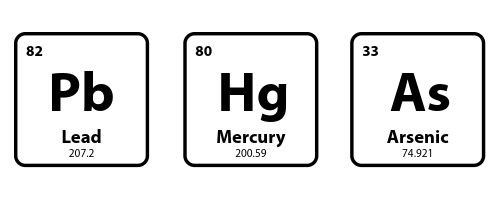
NSF 53: Shutting Down the Metal Before It Hits the Mic
 If there were a Grammy for water filter certifications, NSF/ANSI Standard 53 would be walking up to the podium. That NSF badge on the side of the box is not just for decoration. It means the filter and the system has passed a demanding series of tests by an unbiased third-party that prove it can reduce specific harmful contaminants (such as heavy metals in this case). NSF International is the not-for-profit organization behind the certification, and they make sure products meet tough public health standards with testing methods that are grounded in science.
If there were a Grammy for water filter certifications, NSF/ANSI Standard 53 would be walking up to the podium. That NSF badge on the side of the box is not just for decoration. It means the filter and the system has passed a demanding series of tests by an unbiased third-party that prove it can reduce specific harmful contaminants (such as heavy metals in this case). NSF International is the not-for-profit organization behind the certification, and they make sure products meet tough public health standards with testing methods that are grounded in science.
When a filter is certified by the NSF under Standard 53, it means it's been independently tested to reduce contaminants in drinking water that are known to cause adverse health effects, like the heavy metal headliners we just talked about.
NSF 53 Certified filters are tested to reduce:
- Lead
- Mercury
- Asbestos
- VOCs (volatile organic compounds that are as terrifying as they sound)
- Giardia and Cryptosporidium cysts
- And a supporting lineup of other health hazards
Translation? NSF 53 ensures your water filter isn’t just making your water taste better. It’s actually protecting your health.
The Science Behind the Scenes
(a.k.a. How the Magic Happens)
How do high-performance water filters manage to remove so many contaminants without fancy electronics or a power source?
The answer lies in the multiple types of filtration action of carbon block technology.
- Adsorption: Contaminants are attracted to the carbon surface and sticking upon contact. Heavy metals, chemicals, and other microscopic troublemakers get trapped along the way.
- Mechanical Filtration: The carbon block is densely packed with tiny pores that physically block particles as small as 0.5μm. This is over one-hundredth the width of a single strand of human hair.
- Chemical Transformation: Some pollutants are altered or neutralized through chemical reactions as they pass through the filter media.
All of this happens quietly and without electricity inside of a dense block of activated carbon. It’s a simple and reliable approach that hits all the right notes—kind of like an acoustic set that still manages to steal the show.

The Real-Life Setlist:
Where Heavy Metals Come From
Okay, so you’re on board with the science. But how exactly do heavy metals sneak into your water?
|
 |
|
 |
|
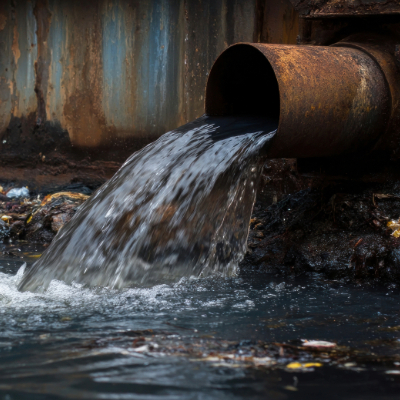 |
|
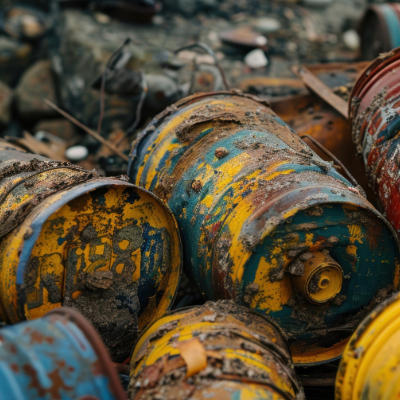 |
Even if your local water utility is doing its best, contamination can still happen after the water leaves the treatment plant, especially in areas with aging water infrastructure. That’s why point-of-use filtration, like a Multipure water filter system, is such a smart move.
Can You Test for Heavy Metals at Home?
In a word: kinda.
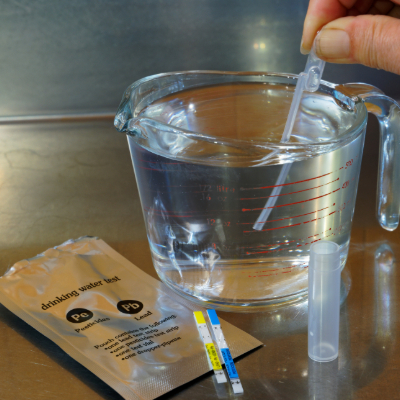 There are home test kits that can detect some heavy metals like lead, but they tend to be limited in scope and accuracy.
There are home test kits that can detect some heavy metals like lead, but they tend to be limited in scope and accuracy.
A good first step for most people is to request a copy of the Consumer Confidence Report (CCR) from their local water utility. These reports are required under the Safe Drinking Water Act (SDWA), a federal law that ensures the quality of Americans' drinking water. Your Consumer Confidence Report provides annual information on the levels of contaminants found in the municipal water supply, including any detected heavy metals. While it won't tell you what’s happening inside your home's plumbing, it can give you a clearer picture of what’s coming out of the treatment plant.
There are also independent companies that offer professional water testing services. These specialized testing services can analyze a sample taken directly from your tap and provide detailed results on the specific contaminants present, including heavy metals. This can be especially helpful if you're concerned about your household plumbing or if you've noticed unusual taste, odor, or staining. Knowing exactly what’s in your water can help you decide whether further action is needed.
And after you do get test results, what then? Unless you’re ready to dig up your plumbing or start hauling expensive bottled water, a quality water filter is usually the most practical and least stressful solution. Staying informed is one of the most important steps you can take. When you understand what’s actually coming out of your tap, you’re in a better position to protect your health and make confident decisions about your water.
Why Multipure Filters Are the True Headliners
You could try deciphering chemical reports and technical specs on your own—or you could let Multipure do the heavy lifting (or filtering) for you. Multipure's water filter systems are NSF 53 Certified and built to tackle the kind of contaminants that shouldn't be anywhere near your drinking glass, especially those that can be a real bummer for your health and well being.
Why choose Multipure? Let's count the (science-backed) ways:
- Lead & Mercury, Begone! Our filters’ ability to reduce the amount of lead and mercury in drinking water is practically a mic drop.
- Triple Threat Certified: In addition to being NSF Certified under standard 53, our water filtration systems also hold NSF Certifications in standard 42 (aesthetic improvement) and 401 (emerging contaminants). And the Aqualuxe and Aquapremier take it a step further with it's NSF P231 Certification.
- Consistent Performance: You won't see a drop in filtration performance throughout the lifespan (capacity) of our solid carbon block filters.
- Real Science, Real Results: Our performance claims are backed by actual laboratory data and verified and certified by an unbiased third-party (NSF). No pseudoscience or smoke machines here.
Multipure takes center stage when it comes to battling contaminants. It’s not backup... It’s the star of the show.
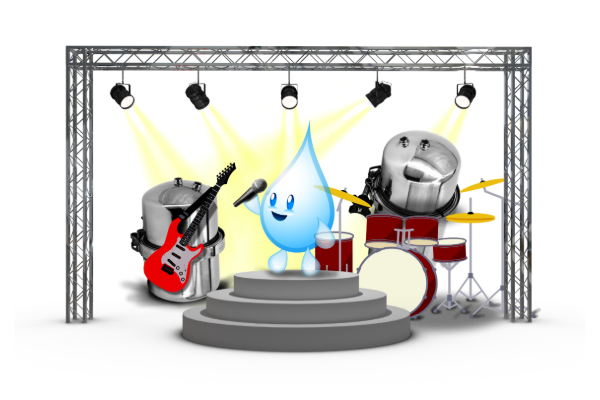
Final Encore: Keep the Heavy Metal in Your Playlist,
Not in Your Glass
You should never have to wonder if your morning coffee is coming with a side of lead, or if your kid’s water bottle is doubling as a heavy metal delivery system. Clean water is a basic necessity, and protecting it shouldn’t require a PhD in chemistry.
That’s where Multipure's NSF Certified water filtration systems step into the spotlight.
When you choose a Multipure water filter system, you’re not just improving the taste of your water. You’re reducing actual health threats with science-backed, third-party verified technology. And with no electricity needed and easy installation, it’s a no-brainer.
So go ahead: throw on some heavy metal and rock on!
...Just keep it on your speakers, not in your sink.

